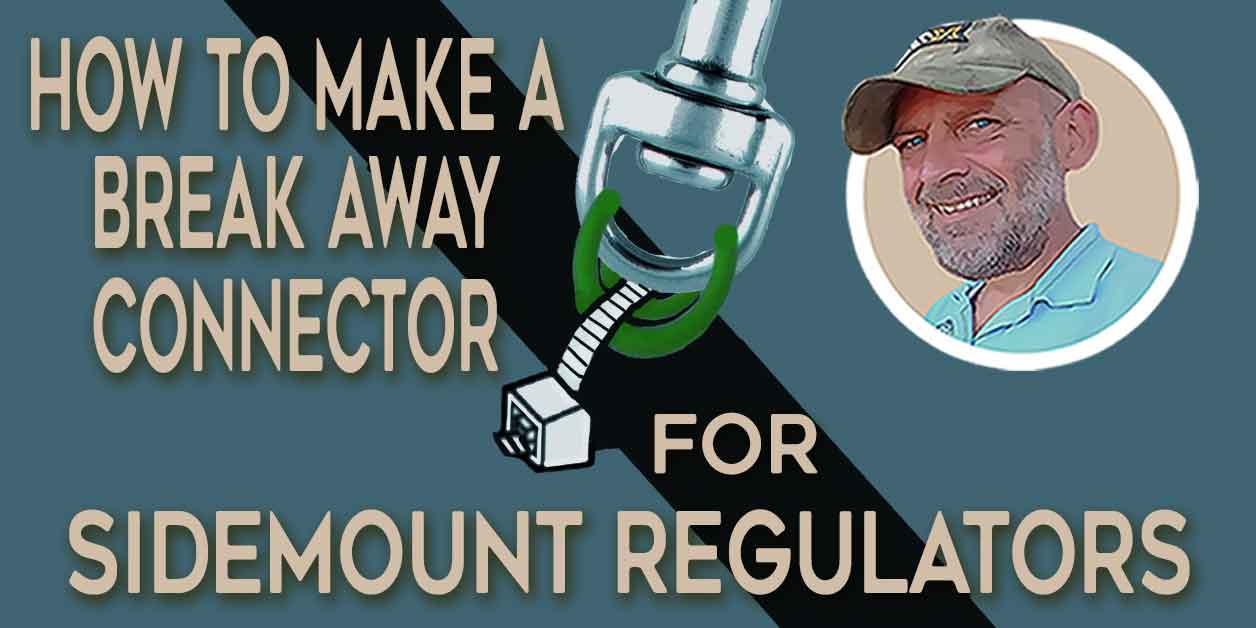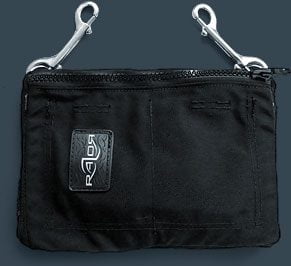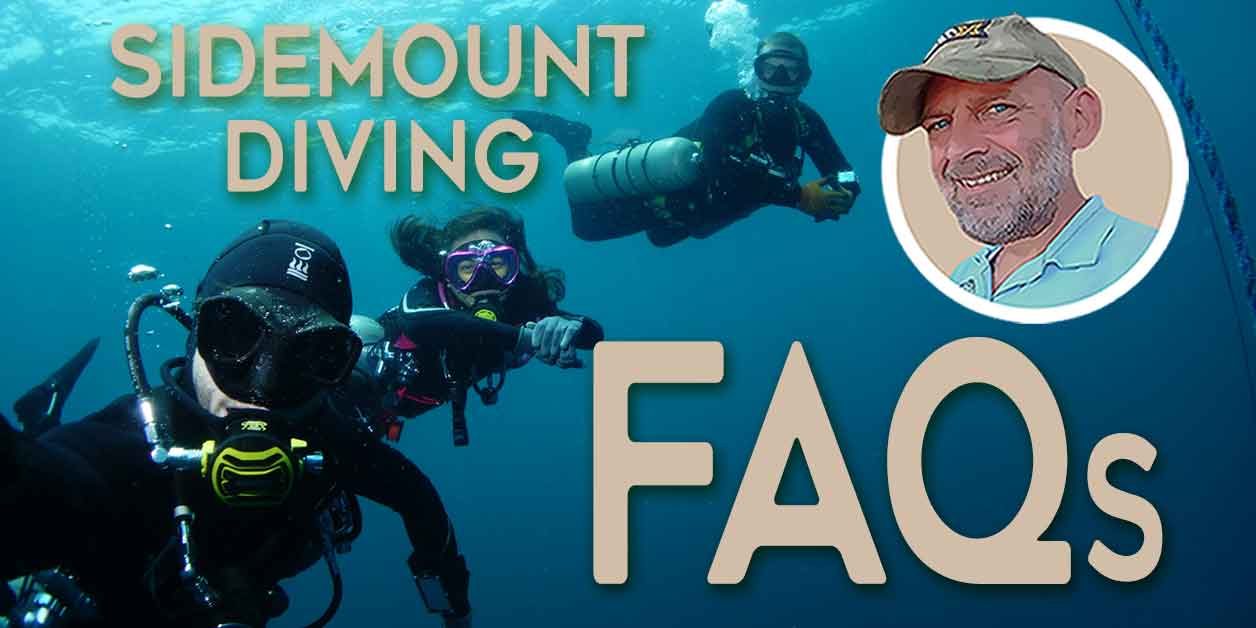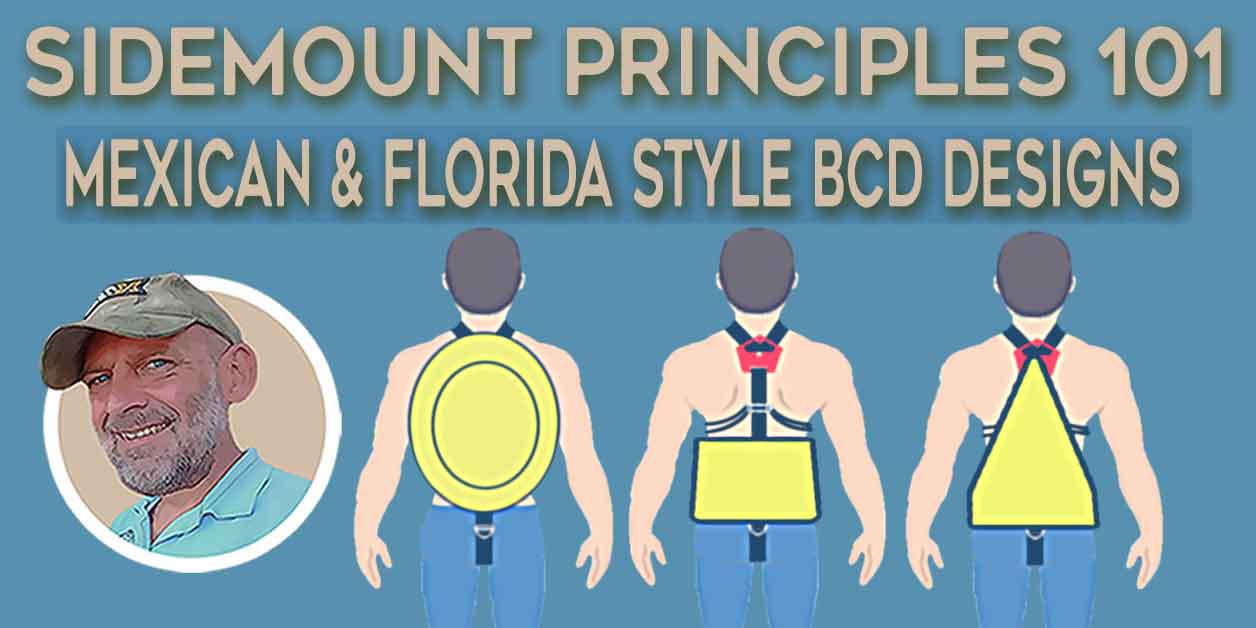The History of Sidemount Diving
The history of sidemount diving is fascinating and learning about it can help divers to understand how the different principles of sidemount gear configuration evolved. Sidemount began originally in the UK as a specialist technique used in sump exploration.
By the 1970s it had emigrated across the Atlantic and began to be used within the Mexican and Florida cave-diving communities. In 2012 sidemount went mainstream when it was adopted by many of the large recreational dive training agencies as a specialty course.
Over the last decade, it has surged in popularity across the globe and has become an active community on social media.
The 1960’s – UK sump diving
The concept of side-mounting cylinders originated from cave diving in the UK, during the 1960s. During ‘dry’ explorations of Wookey Hole, the River Axe, and other underground systems, divers occasionally encountered submerged passages that blocked further exploration. These cavers began incorporating SCUBA equipment specifically to progress beyond underwater areas.
A section of dry cave passage that is filled with water is called a sump. Therefore sump diving is a mixture of dry caving and cave diving. These are often times some of the more physically demanding projects as team members are required to haul heavy gear through multiple dry passages. Also, these sumps are typically very low in visibility due to silt disturbance.
OCDA, Sump Diving
However, because they operated in very confined spaces, and most exploration remained primarily ‘dry’, they began experimenting and improvising with extremely minimalist configurations, minimizing bulk, allowing cylinders to be easily removed/replaced, and retaining the capacity to squeeze through the tightest restrictions.
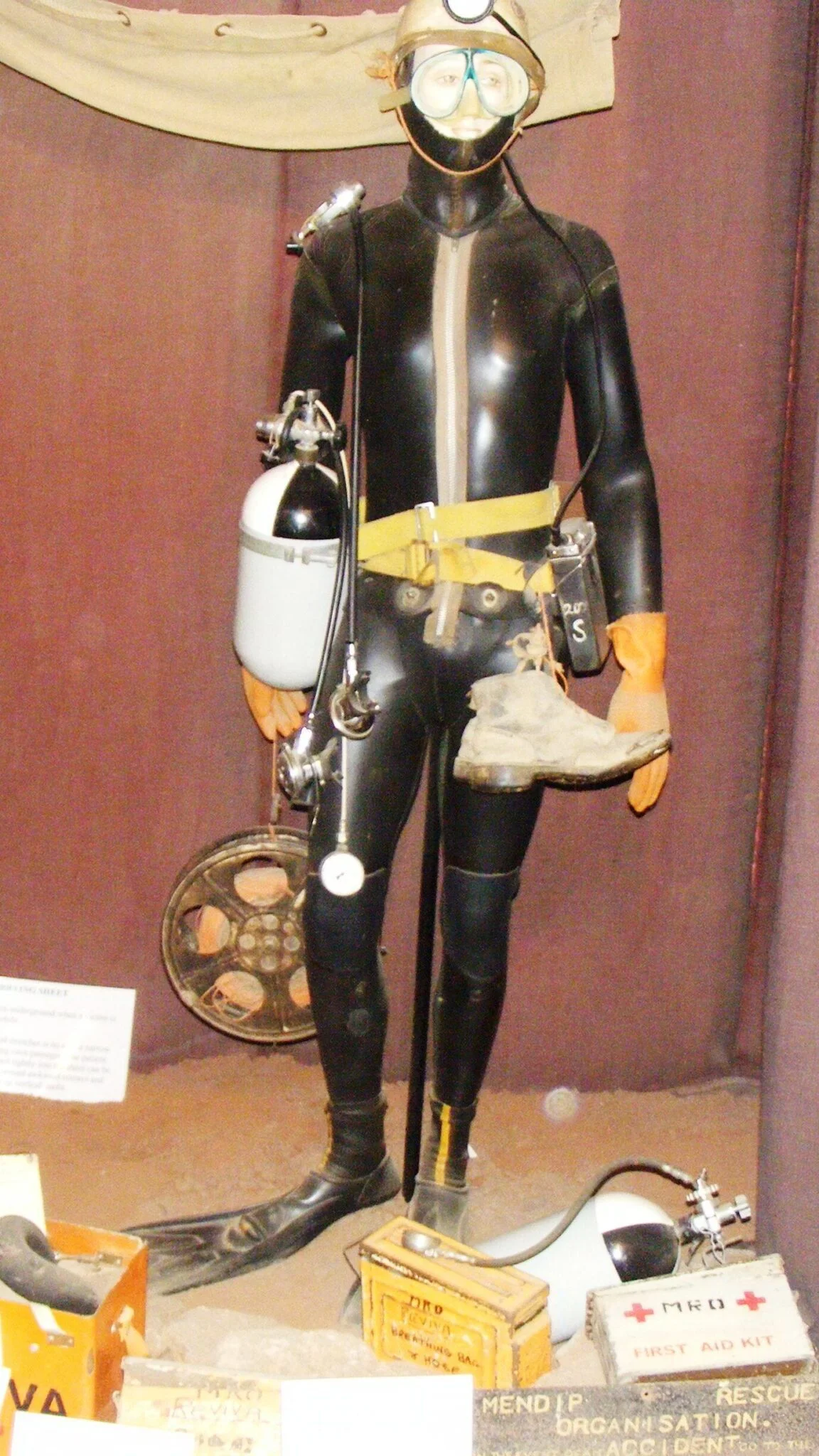
The nature of these ‘dives’ in cramped sumps did not prioritize the need for buoyancy control or underwater propulsion – so the bare minimum needed was a mask, a cylinder, a regulator, a method of attachment to the body, and, only on rare occasions, a set of fins.
The ‘English system’
Many of these early sump explorers adopted an approach based upon a sturdy belt, with an attached cam-band, that allowed a cylinder to be dropped in and carried alongside the outer thigh.
This allowed them to crawl, or wriggle, through the dry cave sections, whilst presenting a secure method of attachment for passing through submerged areas.
Swimming efficiency, reduced water resistance, trim, and buoyancy control were not generally required due to the nature of those caves.
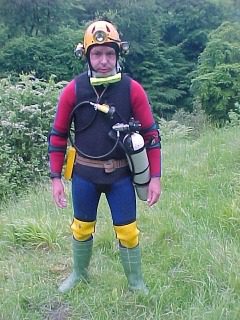
At the time, this approach to ‘wet’ cave exploration was generally called the ‘English System’.
The 1970’s – Florida & Mexico
During the 1970s the ‘English system’ began to be incorporated by American cave divers, operating in Florida and Mexico.
Those cave systems were predominantly ‘wet’ and involved prolonged swimming with SCUBA; thus, more emphasis was paid to developing the diving performance of the system, in particular, buoyancy and trim.
Leading cave divers like Sheck Exley, Forrest Wilson, Woody Jasper, Court Smith, Mark Long, Tom Morris, Lamar Hires, Ron Simmons and Wes Skiles required buoyancy control devices for extended fining and began shifting the location of the cylinders from against the thigh, up to the armpit/against the torso.
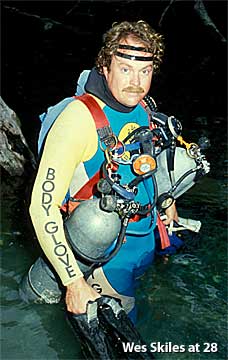
These exploratory-level cave divers began by making their own systems, using and adapting ‘off-the-shelf’ SCUBA equipment for their needs or creating configurations ‘from scratch’, based upon webbing harnesses and improvised bladders for buoyancy. This led to the ‘American’ style of sidemount BCD design.
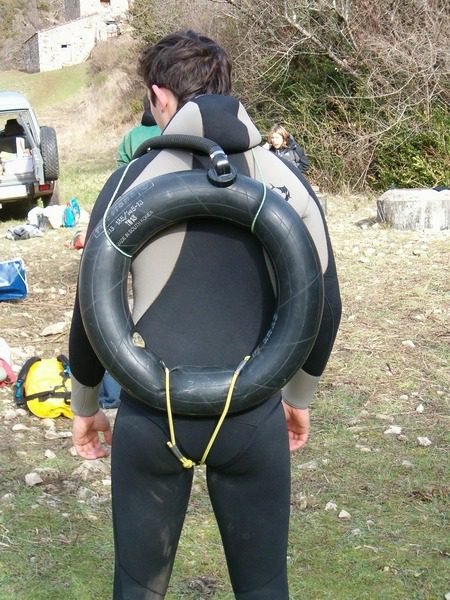
Where aluminum cylinders were more popular, a lightweight approach using improvised bladders; such as the MSR Dromedary hydration system (like a ‘Camelbak’) was adopted.
This was the modern ‘British’ system, in which improvised bladders would be sewn/bolted to the rear of a bare webbing harness and operated by orally inflating and deflating through the adapted ‘drinking tube’.
The 1990s – The first commercial rig
In the mid-1990s, Dive Rite produced the first commercial sidemount diving system, focused on the newly released ‘Transpac’ harness. At the same time, Brett Hemphill developed the Armadillo Sidemount (now sold via Golem Gear). Other cave divers continued to manufacture their own D.I.Y. configurations.
At this time, the use of sidemounted configuration was primarily restricted to a small number of exploration-grade cave pioneers.
The widespread popularity of sidemount diving systems did not emerge until the mid-2010s. A growing interest in technical and cave diving, empowered by more resources being accessible online, soon exposed divers to the concept of sidemount diving.
It was received as an alternative approach that matched the minimalism and functionality of popular ‘DIR/Hogarthian’ back-mounted systems with the advantages of flexibility, comfort, accessibility, and potential safety.
The 2000s – Cave diving popularity & sidemount evolution
The increasing interest in sidemount diving configurations prompted several manufacturers, and individuals, over the last few years to design and sell their own designs of a sidemount system.
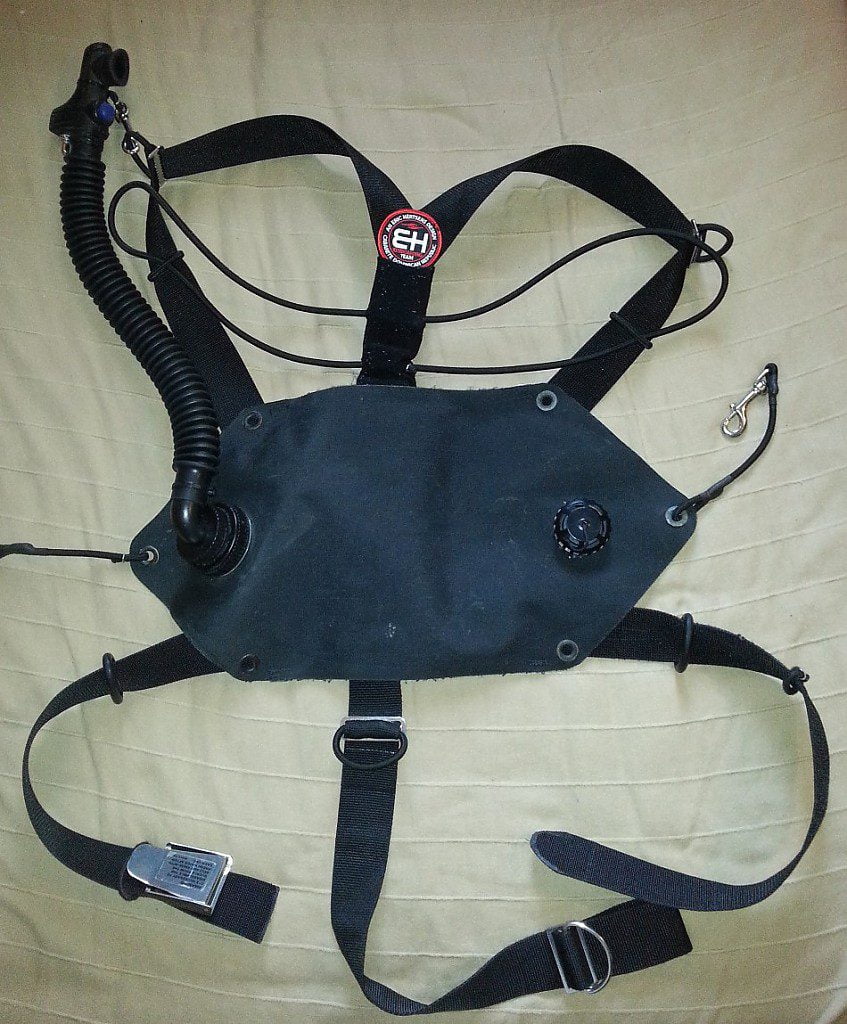
Manufacturers like Hollis, OMS, and UTD all developed and released sidemount equipment.
Simultaneously, Steve Bogaerts (a UK-born cave pioneer, who lives and cave-dives in Mexico) released the very popular ‘Razor’ system and began providing a model-specific training program for his rig.
At this time, several technical scuba agencies developed formal sidemount training programs and incorporated sidemount diving configuration as an equipment option within existing technical diving programs.
The evolution of sidemount BCD design is heavily favored by regional influences. The ‘British’ (Mexico cave) and ‘American’ (Florida Cave) approaches to sidemount equipment design are heavily influenced by local environmental and equipment factors.
The late 2000’s – Sidemount diving goes mainstream
When PADI instructor, Jeff Loflin, devised a distinctive sidemount diving specialty course, it proved extremely popular, being replicated by many PADI technical-level instructors. This soon led to PADI devising standardized sidemount diving programs at both recreational and technical levels. That adoption by a leading dive agency truly cemented sidemount as an increasingly attractive and mainstream option for both recreational and technical divers alike.
Nowadays, virtually every diving agency offers sidemount training at both recreational and technical diving levels; and there are many dozens of sidemount BCDs available to purchase from major scuba equipment manufacturers and smaller, specialized producers.
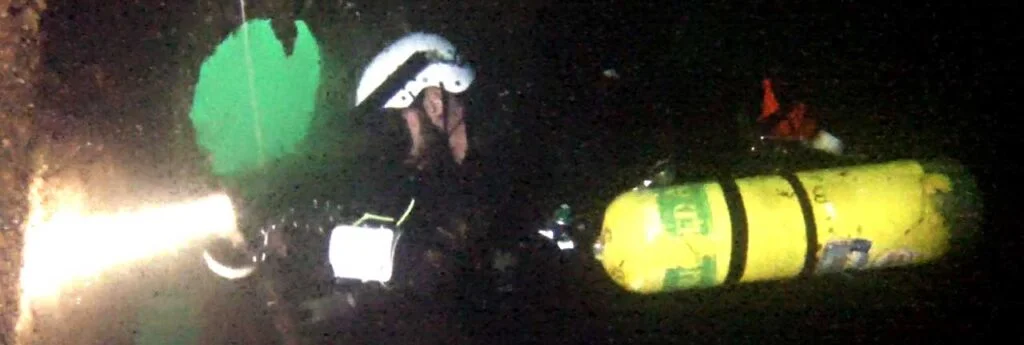
However, the rapid expansion in sidemount diving popularity has also led to many fast-track sidemount instructors being created. Instructors with no interest or history in sidemount diving, who are merely seeking to ‘cash in’ on what they see as a popular trend. This has created a potential ‘minefield’ that the aspirant sidemount diver has to negotiate.
It is very important to ascertain whether a potential sidemount instructor truly possesses the expertise and significant experience in, what is, a truly specialized area of scuba equipment training.
Lectures about the history of sidemount diving
These video lectures may be of interest to readers who desire more knowledge about the history of sidemount diving.
Lamar Hires – The History of Sidemount Diving
(apologies, I am not able to embed this video: watch it on youtube)
https://www.youtube.com/live/Luxxq1EcGws?feature=share
Sidemount History by Patrick Widmann
Read my article ‘The Evolution of Sidemount Design: Two Distinct Paths Shaped by Florida and Mexico‘ published by InDepth Magazine.
Buy my ‘Sidemount: Principles For Success’ ebook now!
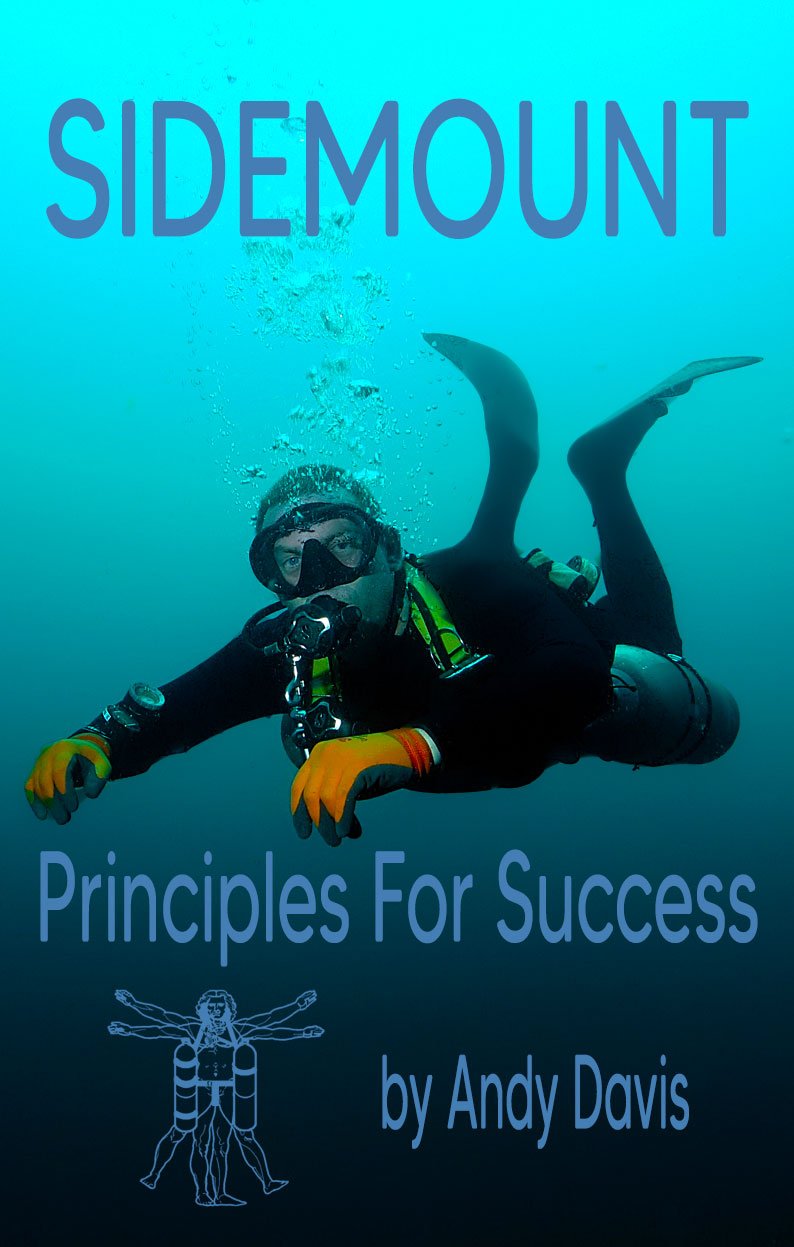
My comprehensive guide to sidemount configuration and development as a diver.
178 Pages. PDF format. Only $25
Fully Illustrated!
Chapters include:
- Sidemount history, design styles, and cylinder principles
- Harness and bungee setup and sizing
- Configuring deco/stage cylinders
- Diagnosing cylinder trim problems
- Regulators and hardware
- Training and skillset development
About The Author

Andy Davis is a RAID, PADI TecRec, ANDI, BSAC, and SSI-qualified independent technical diving instructor who specializes in teaching sidemount, trimix, and advanced wreck diving courses.
Currently residing in Subic Bay, Philippines; he has amassed more than 10,000 open-circuit and CCR dives over three decades of challenging diving across the globe.
Andy has published numerous diving magazine articles and designed advanced certification courses for several dive training agencies, He regularly tests and reviews new dive gear for scuba equipment manufacturers. Andy is currently writing a series of advanced diving books and creating a range of tech diving clothing and accessories.
Prior to becoming a professional technical diving educator in 2006, Andy was a commissioned officer in the Royal Air Force and has served in Iraq, Afghanistan, Belize, and Cyprus.
In 2023, Andy was named in the “Who’s Who of Sidemount” list by GUE InDepth Magazine.
Purchase my exclusive diving ebooks!
Originally posted 2023-02-09 19:14:03.








